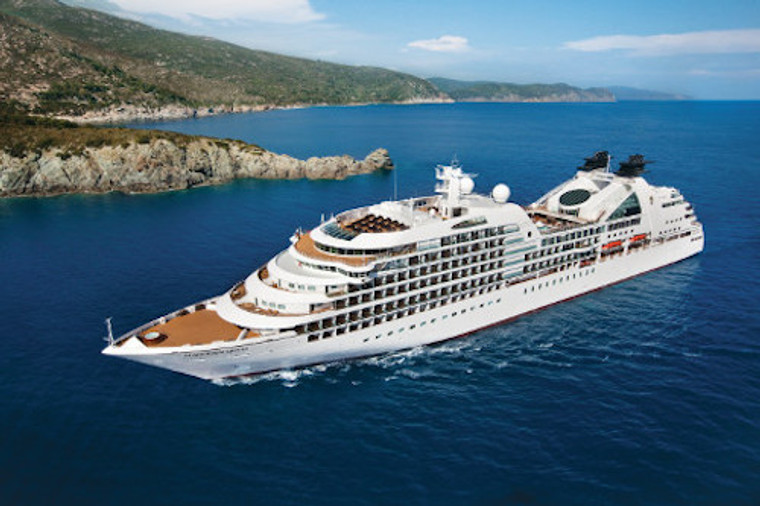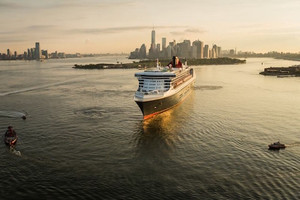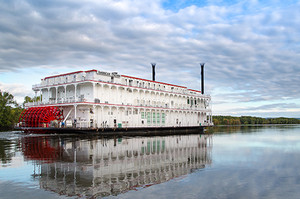
If Mexico was a person, it would be fair to describe it as having an engaging multiple personality disorder. The northern part of the country is characterised by its deserts and rugged mountain ranges while, in contrast, the southern states are lined with the shores of the Pacific Ocean and Gulf of Mexico, with an abundance of mangrove swamps and forests. And then there’s central Mexico, the heartland of the country dotted with picturesque and colourful towns, villages and colonial cities, some of which have been declared World Heritage Sites. For most travellers who visit by ship, however, their experience of Mexico is limited to a variety of destinations on the Pacific Coast and the Yucatan Peninsula. Both areas of grand natural beauty, exotic marine life, and stunning beaches, they are not lacking in either colour or history and possess a unique character of their own.
The Pacific Coast
From the steamy craziness of Acapulco and the hedonists’ delight of Cabo San Lucas, to the shabby chic of Mazatlan and pristine beaches of Huatulco, cruising the Pacific coast of Mexico reveals an eclectic mix of exotic destinations. From south to north the landscape changes, then changes again. All along, the coastline is dotted with communities, from tiny fishing villages to major resort destinations, and everything in between. In the south, the state of Oaxaca is known for its important history and culture, and it’s also the site of one of the country’s newest eco-friendly resort area, the Bahias de Huatulco, or Bays of Huatulco. A collection of nine bays and 36 beaches along a rugged 35 kilometre or 22 mile coastline, Huatulco is a beach and ocean lovers’ paradise unspoiled by modern commercial tourism so far, and surprisingly it doesn’t even rate a mention on many maps. But it’s a place which boasts a backdrop of the Sierra Madre mountains, and one where you can find a secluded white sand beach, abundant marine life, and enjoy the flavour of a real Mexican village in the nearby inland village of La Crucecita.
Acapulco
Around 600 kilometres or 373 miles further north is the best-known resort on Mexico’s Pacific coastline, if not the entire country. Acapulco is a city which thrived in the 1950’s thanks to the Hollywood jetset; an era when Frank Sinatra invited one and all to "Come fly with me...down to Acapulco Bay," and Elvis Presley spread the message in the early 60’s with his hit film "Fun in Acapulco". Today Acapulco remains a modern-day playground for the rich and famous, thanks to its sweeping bay, stunning beaches dotted with tall, majestic palm trees, its history, and a manic energy. One of the city’s enduring traditions is performed by its famous gang of cliff divers, who’ve earned a reputation around the world for their daring. From a height of 40 metres or over 130 feet at the famous cliffs of La Quebrada, just north of the Old Town, the divers risk their lives with each leap. The skill and timing of the divers has been a major drawcard for Acapulco for decades, and for good reason.
Mazatlan
To the north of Acapulco, Mazatlan exudes a colonial charm which mirrors its rise to prominence as an influential port city in the early 1800’s, and it can claim to be ahead of Acapulco in that it began a tourism industry in the early 1900’s, thanks to its year-round perfect weather and nice beaches. Like many Mexican port cities there are two distinct sides of Mazatlan. One is the malecon, or seaside boulevard which stretches for more than 16 kilometres past golden sands and good surf breaks. And there’s an Old Town, and at the heart of Old Mazatlan is the Plaza de la Republica. Facing the plaza is the Catedral de Inmaculada Concepcion (Cathedral of the Immaculate Conception) which was built in the late 1800’s and serves as a useful landmark with its distinctive yellow-tiled spires.
Cabo San Lucas
The crossing from Mazatlan to Cabo San Lucas over the Gulf of California can be a bumpy experience, as it’s a spot where the cold currents of the north clash with the warmer ones from the south. But the reward is a Mexican seaside resort which is becoming one of the most popular destinations in this part of the world. On the southern tip of Baja California, Cabo San Lucas is a beach lovers’ paradise with a nightlife that’s become legendary. Blessed with great weather and warm water year-round, the reasons for visiting Cabo are varied, but they all revolve around enjoying the great outdoors. Sun worshippers, party animals, divers, snorkelers, surfers, fishing enthusiasts and golfers hit Cabo to indulge their past-time during the day, and it all makes for an amusing mix of people when the sun goes down and it’s time to go out and play. The most popular beach is Playa El Médano, just east of the marina, and although it’s often quite busy, it is a beautiful stretch of pure white sand and azure water. A quieter and more beautiful option is Playa del Amor, or Lovers’ Beach, which is on the western side of the marina. The most famous landmark in Cabo, however, are the stunning rock formations called Los Arcos, which rise up out of the Sea of Cortez and provide the perfect backdrop for a Mexican sunset.
The Yucatan Peninsula
This steamy region of Mexico lies in the southeastern corner of the country, between the Gulf of Mexico and the Caribbean Sea. Boasting a year-round hot and humid climate, it’s a haven of beach resorts and natural paradises. The peninsula comprises three states - Campeche, Yucatan and Quintana Roo - and is famous for being the home of many Mayan archeological sites. Here, visitors discover that many of the traditions of the Maya persist, from the traditional blouse worn by women called a huipil, to the homes with straw rooftops. Destinations which are popular for visitors include Campeche, an historic commercial port and fortified city which is also a World Heritage site, and the nearby archeological zones, Edzna and Calakmul. Two hours away is the white city of Merida, famous for its local cuisine, historical buildings, and freshwater pools which connect to a network of amazing submerged caverns. Here you will also discover the two most cherished ancient sites of the Mayan world, Chichen Itza and Uxmal.
Cancun
On the Mayan Riviera in Quintana Roo, there are the stunning ecological parks of Xcaret and Xel-Ha, as well as the Great Mayan Reef, the second largest reef in the world, and a paradise for scuba diving and snorkelling. But major drawcards of the region are its beaches and famous beach resorts, and a few of the most popular ones, including Cancun, Cozumel, Isla Mujeres and Playa del Carmen feature on many Caribbean cruise itineraries. Cancun vies with Acapulco for the number one best known Mexican resort. A mini-metropolis on the Mayan Riviera, it’s impressive beachfront hotel strip stretches for more than 30 kilometres or 19 miles and is packed with hotels, spas, shopping malls and restaurants. But Cancun also boasts a year-round subtropical climate which keeps visitors returning, as well as the balmy turquoise waters of the Caribbean Sea which gently lap its palm fringed, white sand beaches.
Cozumel
Located 19 kilometres or 12 miles off the coast of Quintana Roo, Cozumel is an island covered with lush jungle and surrounded by a rocky coastline, beaches, lagoons and mangroves. The waters encircling the island boast an impressive group of coral reefs which are part of the Great Mayan Reef, and they are home to an impressive diversity of marine life. Its only settlement is San Miguel de Cozumel, which has a relaxed Caribbean atmosphere. Back on the mainland, south of Cancun, Playa del Carmen, has been described as one of the most attractive beach destinations in the country. It’s located in the heart of the Mayan Riviera, and a haven for lovers of the water sports, from snorkelling and windsurfing to kitesurfing, which is a new extreme sport combining surfing and parasailing. Lovers of diving can also access the Great Mayan Reef easily from Playa del Carmen, diving at depths of more than 10 metres or 33 feet, among tropical fish and coral which has existed for more than 500 years.
- By:
- Joanna Hall













